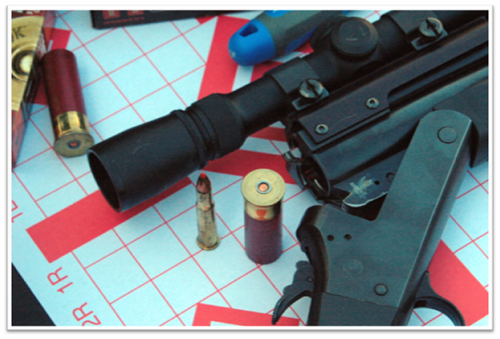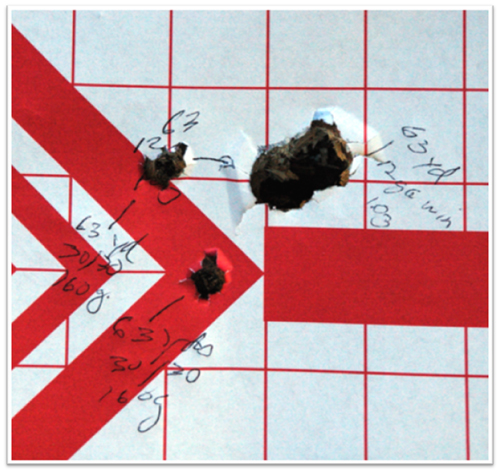
The Ultimate Deer Gun
ARTICLE BY INDREK KONGATS, NOVEMBER 11, 2016

The most popular style of automobile used to be the sedan, then came the ever popular mini-van and today, it is the Sport Utility Vehicle or SUV. The reason the SUV is so popular is because it is so practical. During the day, it is your commute to work; after work, it takes the kids to soccer and in the evening, it is your going out on the town car. It has room to haul large loads, it can handle all weather and road conditions, it sits high so you see the road better and it has certain glamour or lifestyle associated with it that people love.
Well, there is a rifle, or a gun, or whatever you might wish to call it, that is the utility vehicle in the hunting world— it’s called a combination gun or more exactly a Savage 24. The Savage 24 is an over and under rifle shotgun and has been manufactured off and on from the late ‘30s to just being reintroduced as the Savage 42. Originally, it was a survival rifle made for combat pilots in World War II in the event that if the pilot was shot down in a remote area he could use it to survive. The first versions where manufactured in the same calibers as the modern Savage 42, 22 long rifle over a 410 ga. shotgun. Over the years, and particularly in the 70s, it grew and was manufactured in larger calibers like the 30-30 and 20 ga. Then in and around 2005, it was offered in everything from 22 up to 357 mag. over 410 ga. to 12 ga.
The combination that I picked out specifically for my needs was the 30-30 over the 12 ga., black with an all-weather synthetic stock. The reason for this was that I was traveling to the Arctic to hunt caribou and wanted something that I could also hunt ptarmigan without having to take two weapons and worry about exceeding the strict 55-pound baggage weight limits imposed by all the airlines. The 30-30 was ideal for the caribou and the 12 ga. was excellent for ptarmigan. I also used the shotgun for defense against nosey bears while fishing for Arctic char and brook trout. It was the perfect weapon.
When I came home, I decided to also use it for deer hunting and on my very first outing, I bagged a nice 6-point at 80 yards with a 160gr Hornady 30-30 shell, a clean kill with the buck stopping dead in its tracks. My thinking was that the slug that was cambered in the shotgun barrel would work well at closer range and in heavier cover while the centerfire caliber would work at a greater distance of a hundred yards or more. With the new hunting regulations allowing the use of centerfire deer rifles and the long popularity of the traditional shotgun, it was the best of both worlds. both worlds.
Before I bought my Savage 24, I had used my grandfather’s Savage 24 22 LR over 410 ga., so I was well aware of this type of gun and that definitely influenced my desire to own one. His was a very plain gun with a nice wooden stock, but no fancy checkering. He used it mainly on porcupines that constantly ate holes in the guest cabins of the resort he operated in northern Canada. He also used it on woodchucks and hunted ruffed grouse with it. I used it for all of the above and target practice as a kid.
For big game hunting, I wanted to have more than iron sights, so I purchased a quick aim red dot type sight that I thought would be useful on moving deer and flying birds. The problem that I found was that the recoil from the shotgun slug was violent enough that I would have to re-adjust windage and elevation on a regular basis. This wouldn’t do, so I replaced it with a variable scope that went as low as 3 power for close quarters and higher powers for longer shots. I now find that the 3 power setting is all that I ever use or need unless I’m spotting with it.
I recently went out to the range to record the aim of this rifle after reading some comments questioning its accuracy. The theory was that having two independent barrels one above the other the point of aim would be different when sighted in. There were also comments that the recoil from the slug would smash the scope into the shooter’s eye; there were comments that it was too heavy and too slow to swing on a bird. In other words, there were a lot of negative comments written, but I am not sure if any of the authors of those comments ever hunted with the gun. 
First and foremost, once sighted in the 12 ga. slug and the 30-30 160 gr. bullet ended up close enough that I wasn’t sure whether or not they went through the same hole. After I adjusted the windage by a couple of clicks to separate the slug from the bullet, the gun proved very accurate. I ended up shooting about 20 rounds, 10 each through the shotgun barrel and rifle barrel and not once did I get whacked in the eye by the scope. The gun is heavy I guess, at 7.5 pounds, but that just helps in absorbing the recoil and after 20 rounds, my shoulder never felt sore. I can testify that the gun swings just fine, as I had no problem downing Ptarmigan on my Arctic trip. So my final conclusion is that it truly is the ultimate gun for eastern whitetail deer hunting. One more thing: it is not as fast in pumping out lead or as much of it as a semi-automatic rifle or shotgun, but it is quicker to load and quicker to change slugs to bird shot if the occasion arises— and do we really need more than one or two shots on a deer or do we need more practice on the firing range? Unfortunately, the only guns available today in the 30-30 over 12 ga. are on the used gun market, that is if you can find one.
back to main menu

|